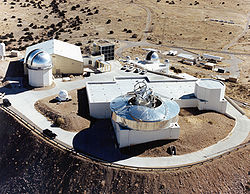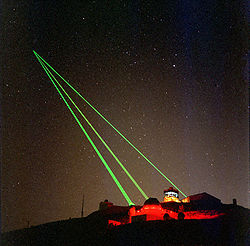


This article relies largely or entirely on a single source .(August 2023) |
Starfire Optical Range (SOR - Pronounced as an initialism) is a United States Air Force research laboratory on the Kirtland Air Force Base in Albuquerque, New Mexico. Its primary duty, according to the official website, is to "develop and demonstrate optical wavefront control technologies." The range is a secure lab facility and is a division of the Directed Energy Directorate of the Air Force Research Laboratory.
Contents
SOR's optical equipment includes a 3.5 meter telescope which is "one of the largest telescopes in the world equipped with adaptive optics designed for satellite tracking" according to the Air Force, a 1.5 meter telescope, and a 1-meter beam director.
